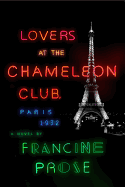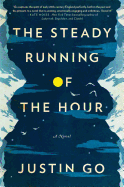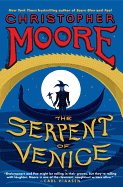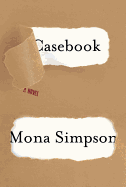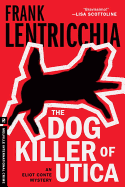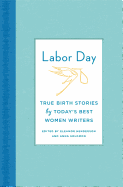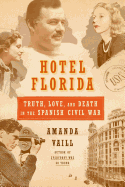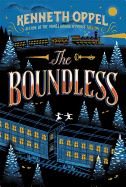 |
| photo: Caroline Hungerford |
Greg Iles wrote his first novel, Spandau Phoenix, a thriller about Nazi war criminal Rudolf Hess, in 1993, and it became the first of his 12 New York Times bestsellers. In 2010 The Devil's Punchbowl reached #1 on the Times list; that novel was the third to feature Penn Cage, a prosecutor turned mayor in Natchez, Miss. (Iles's home town). In 2011, Iles sustained life-threatening injuries in a traffic accident and ultimately lost part of his right leg. He has since recovered and is now finishing a trilogy of novels again featuring Cage. The first volume is titled Natchez Burning and will be published on April 29 by Morrow. The next two will be The Bone Tree (2015) and An Unwritten Law (2016).
Penn Cage's world--his town, his family, his friends--has a veneer of Southern charm and graciousness, but under a thin layer is not just corruption and murder, but evil. In Natchez Burning, Penn's father, a revered doctor, is accused of murdering an African-American nurse with whom he worked in the early '60s. Combine this with the doings of a brutal offshoot of the KKK, the Double Eagles, and you get vintage Greg Iles with a new level of outrage and sorrow over cruelties of the past that haunt the present. A few months ago, we talked Iles about Natchez Burning.
After your accident, did you turn back to Penn Cage as a familiar "place," or was the book already being written?
I was writing the book prior to the accident, and even then realized the theme was bigger than just the one book. I was in the car wreck because of the book. It's complex. One of the things as a writer you have to have is the ability to hold an entire fictional universe in your mind. I had no business driving the car in that mental state. I pulled out onto the highway, and the crash happened because I was in the book, not in the car.
I came back to Penn Cage a month after the long hospital stay. Once you're on the bestseller lists, there is tremendous pressure to write a book a year, which can be deleterious to publishing and writing as a whole. I've generally taken a little longer than that, but knew I hadn't given this story the justice it deserved. But in this time, I got the story out the way I wanted to, on a Jungian level.
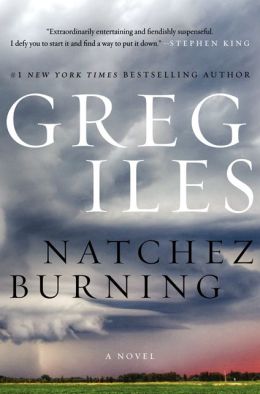 Is Henry Sexton, the crusading newspaperman in Natchez Burning, based on a real person?
Is Henry Sexton, the crusading newspaperman in Natchez Burning, based on a real person?
Yes, Stanley Nelson, the editor of the weekly Concordia Sentinel. Stanley Nelson is a hero (and Pulitzer finalist), who has been tirelessly working cold case murders for years, investigating forgotten victims in the South. He's literally embarrassed the FBI in his investigation of civil rights murders. Through my book, a million people will read his story, and I hope it will push some of the cases to resolution.
I've shied away from using the KKK in my novels--it puts me off in other books, it's too easy. But in this case, having gotten to know Stanley, I found a KKK faction (the Silver Dollar Group) that was very different, very committed to brutality.
You write, "Normal men brushed up against those feelings by hunting animals or participating in dangerous sports, but men who had known combat--and thrived in it--achieved no rush from substitutes."
Whether you watch 12 Year a Slave or Schindler's List, most people have had very little exposure to real violence, but even the most realistic portrayals don't even come close. No special effects can show you. If you've ever seen a brutal bar fight, it's more nauseating and terrifying than what you can imagine. You take young men, give them an M16 and free rules of engagement, and you have created an environment you can't contain. It happened in the Boer War; it happened in Vietnam, Iraq, Afghanistan--with the saturation of cameras and media, it's been harder and harder to hide behind the "fog of war." Most human beings are repelled by violence and they don't lose their humanity. But a small percentage of people have sociopathic tendencies--the KKK comes to mind--and the rules of civilization are suspended, their true natures have free range.
The portrait of Albert Norris is unforgettable.
Albert was a real guy--Frank Morris--an honest shoemaker who was murdered in 1964 because he walked out to a white woman's car to deliver her repaired shoes, and refused to fix KKK members' shoes for free. If anyone can read the chapter about Albert and then stop, they aren't my reader.
When civil rights workers James Chaney, Andrew Goodman and Michael Schwerner went missing in 1964, the FBI was sure they had been murdered. During the search for their bodies, quite a few other bodies were discovered, and when it was determined that they were not the three men, nothing was done to investigate because they were black. The only reason Chaney, Goodman and Schwerner were sought was because two of them were white.
Being black in the South, there was no one to turn to, even if the FBI came down. They'd be here one week, gone the next, and liable to get black people killed in the process.
Iles concluded by saying that there were critical parts of that story he had kept to himself for years, almost afraid to confront the implications. And he wondered if he had made enough concessions to the thriller genre to get people to read about and accept his underlying theme. We think he will succeed. --Marilyn Dahl, editor, Shelf Awareness for Readers
Greg Iles: The Past Is Always Present





 Is Henry Sexton, the crusading newspaperman in Natchez Burning, based on a real person?
Is Henry Sexton, the crusading newspaperman in Natchez Burning, based on a real person? 